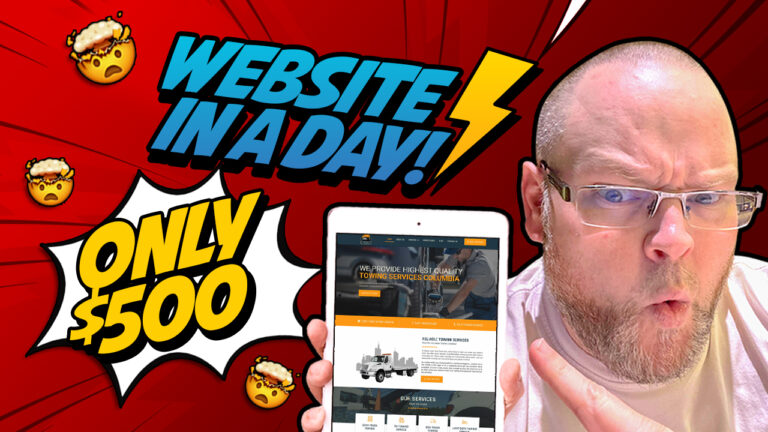
In the competitive digital landscape of the United States, effective web design goes beyond aesthetics—it’s a strategic tool for attracting and retaining American audiences. From user experience (UX) to search engine optimization (SEO), every aspect of your website should cater to the preferences and behaviors of American users. Here’s how you can optimize your web design to resonate with this diverse audience:
Responsive Design for Mobile-First Users
Americans are increasingly reliant on smartphones and tablets for browsing. Ensure your website is fully responsive, providing a seamless experience across all devices. Mobile-first design not only improves user engagement but also enhances SEO, as search engines prioritize mobile-friendly websites.
Fluid and Adaptive Layouts
Responsive design begins with creating fluid and adaptive layouts that seamlessly adjust to different screen sizes and orientations. This approach ensures that your website looks and functions flawlessly on smartphones, tablets, laptops, and desktops alike. By employing flexible grid systems and CSS media queries, your website can dynamically adapt its content and design elements based on the user’s device.
Touch-Friendly Navigation
Navigation is critical for user experience on mobile devices. Replace traditional hover-based menus with touch-friendly alternatives like hamburger menus or tabbed navigation. These elements simplify the browsing experience on smaller screens, allowing users to easily access different sections of your website without frustration.
Optimized Images and Media
High-resolution images and videos can significantly impact load times on mobile devices with limited bandwidth. Optimize your media assets by compressing images without sacrificing quality, using modern image formats like WebP, and implementing lazy loading techniques to prioritize content that appears above the fold. This ensures a smooth and rapid browsing experience, enhancing user satisfaction and reducing bounce rates.
Content Prioritization
Mobile users often have different browsing behaviors compared to desktop users. To optimize for mobile-first design, prioritize essential content and calls to action (CTAs) prominently on smaller screens. Use concise headlines, clear CTAs, and strategic placement of content to guide users through their journey efficiently. Avoid overwhelming mobile users with excessive text or cluttered layouts that can lead to frustration and increased bounce rates. Source : privateview18.com
Performance Optimization Across Devices
Consistency in performance across all devices is crucial for maintaining user engagement and SEO rankings. Conduct regular performance audits to identify and address issues such as slow-loading pages, unnecessary JavaScript, or large CSS files. Implement techniques like minification, browser caching, and content delivery networks (CDNs) to ensure fast load times across different devices and geographical locations.
Speed and Performance Optimization
In a fast-paced digital environment, Americans expect websites to load quickly. Optimize your site’s performance by compressing images, leveraging browser caching, and minimizing HTTP requests. A faster website not only improves user satisfaction but also boosts your search engine rankings.
Image Optimization
Images are crucial for engaging users visually, but large, uncompressed images can significantly slow down your site. Optimize images by compressing them without sacrificing quality. Use formats like JPEG or WebP for photographs and PNG for images with transparency. Additionally, consider lazy loading techniques to defer offscreen images, ensuring that only visible content loads initially, improving initial load times.
Minimize HTTP Requests
Each element on your web page requires an HTTP request. Minimize these requests by combining multiple style sheets into one and reducing the number of scripts and plugins. This reduces latency and speeds up page loading times, especially on mobile devices and slower internet connections.
Browser Caching
Leverage browser caching to store static files like images, CSS, and JavaScript locally on a user’s device. This allows returning visitors to load your site more quickly by retrieving files from their local cache rather than re-downloading them from the server. Configure caching headers to specify how long files should be cached to balance between freshness and load speed.
Content Delivery Network (CDN) Integration
Integrate a Content Delivery Network (CDN) to distribute your site’s static content across multiple servers worldwide. By serving content from servers closer to your users, a CDN reduces latency and improves loading times, especially for geographically dispersed American audiences. Choose a CDN provider with robust performance metrics and global coverage to ensure consistent speed gains.
Code Optimization
Streamline your website’s code to eliminate unnecessary characters, spaces, and comments. Minify HTML, CSS, and JavaScript files to reduce their size and improve parsing speed. Use efficient coding practices, such as reducing DOM elements and avoiding inline styles and scripts, to enhance browser rendering performance and overall responsiveness.
Localization and Cultural Relevance
Tailor your content to resonate with American culture and preferences. This includes using language that speaks directly to your target audience, referencing local events or trends, and understanding regional variations in terminology and colloquialisms. Localization enhances user engagement and encourages repeat visits.
Localization and cultural relevance are integral to creating a compelling web design that resonates with American audiences. By understanding regional nuances, adapting language and visuals, and respecting cultural sensitivities, you can create a website that not only attracts attention but also fosters meaningful connections with users across the diverse landscape of the United States.
Accessibility Standards Compliance
Compliance with accessibility standards, such as the Americans with Disabilities Act (ADA), is crucial for ensuring inclusivity. Implement features like alt text for images, keyboard navigation, and color-contrast adjustments to accommodate users with disabilities. Accessibility not only broadens your audience but also reflects positively on your brand’s commitment to diversity.
Ensuring accessibility compliance goes beyond meeting legal obligations—it enhances your brand reputation, expands your audience reach, and improves overall user satisfaction. By creating a website that is accessible to everyone, you foster a positive user experience and build trust and loyalty among all users, regardless of their abilities.
SEO-Friendly Content and Structure
Integrate SEO best practices into your website’s content and structure. Use relevant keywords naturally throughout your pages, optimize meta tags and descriptions, and structure content with headers and bullet points for readability. A well-organized site architecture improves crawlability and indexing, enhancing your visibility in search engine results.
Secure and Trustworthy Design
Security is paramount in gaining the trust of American users. Implement HTTPS encryption, regularly update software and plugins, and display trust signals such as SSL certificates and customer testimonials prominently. A secure website not only protects user data but also boosts confidence in your brand.
Conclusion
Optimizing web design for American audiences is crucial for maximizing online visibility and user engagement. At Rank Fortress, we specialize in integrating SEO essentials into every facet of web design. From responsive layouts that ensure seamless mobile experiences to intuitive navigation structures that enhance user satisfaction, our approach is tailored to elevate your brand’s online presence. By focusing on both aesthetic appeal and technical precision, we create websites that not only attract but also retain visitors, driving sustained growth for businesses across the USA.
Ready to enhance your website’s performance and connect with your American audience? Contact Rank Fortress today at (904) 770-5783 or visit our website to learn more about our comprehensive SEO and web design services. Let’s transform your digital presence together.

